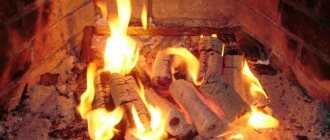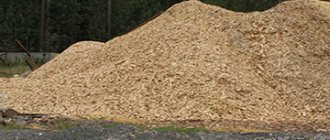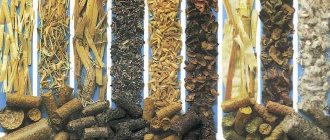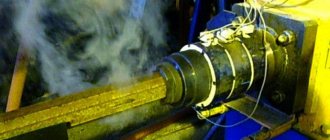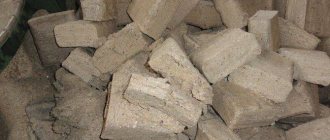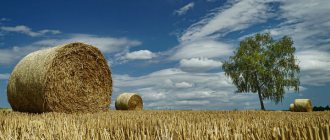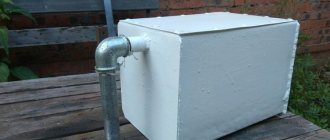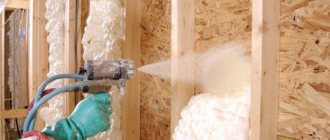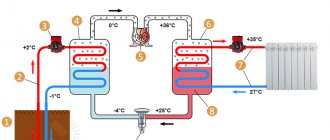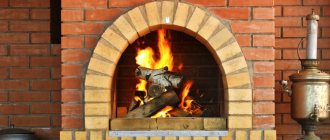Recently, it has become fashionable to use not only traditional fuel in the form of firewood for lighting stoves, but also other alternative options. For example, fuel briquettes, natural materials compressed at high temperatures: sawdust, sunflower husks, peat, straw, etc., are becoming increasingly popular. Made from biological waste, 100% natural and environmentally friendly, fuel briquettes allow you to efficiently and inexpensively fuel your home or bathhouse.
In this article we will talk about how to make fuel briquettes with your own hands from scrap materials. To do this, you will need to buy or make suitable equipment for processing waste and learn how to properly make Euro firewood. Making fuel briquettes with your own hands will allow you to solve several problems at once:
- get rid of waste;
- obtain efficient and technologically advanced fuel for home heating;
- save money on firewood.
Homemade fuel briquettes can be of any shape
Homemade press
If you have a drawing and certain design skills, you can make a press for fuel briquettes with your own hands.
There are two types of homemade devices for briquetting - those operating from a jack and those with a manual drive.
A description of the assembly of the structure will help you understand how to make a press and which option is best to use.
Manual
To make a hand press, you need a punch. It is constructed from thick metal sheet. A pressure lever is attached to the material, and the structure is secured using hinges.
The punch is installed in a special form. Usually it is made square. The mold is made from metal. Using a thin drill, holes are drilled in the bottom and sides to allow moisture to escape during the pressing process.
To collect the released water, a container is used in which the finished press is installed.
From the jack
To obtain higher quality solid fuel and improve the design of the press, a hydraulic jack is used.
The manufacturing process of such equipment consists of the following stages:
1. The base for the press is formed from the channels. All metal parts are fastened by welding.
2. Racks are attached to each corner of the prepared base in a vertical position. Each support is taken 1.5 meters high.
3. The mixer is welded to the stands. The drum can be made from a pipe with a large diameter or take a ready-made part from an old washing machine.
4. A galvanized steel tray is fixed under the mixer, from which the raw materials will penetrate into a special mold.
5. Holes are created in the thick-walled pipe intended for the matrix. They should be evenly distributed throughout the circular contraction. The width of each opening should be from 3 to 5 millimeters.
6. At the bottom of the mold, a flange is fixed using a welding machine, to which the bottom is screwed.
7. The finished form is connected to the base.
8. After this, a punch is cut from steel sheets. It should have the same shape as the matrix. Using a rod, the punch is connected to a hydraulic element.
The assembled mechanism is fixed on top of the form to the racks. The tray is fixed at the bottom.
To speed up the process of removing pressed briquettes, it is recommended to weld the disk and spring to the bottom of the matrix. It must match the diameter of the punch. This mechanism will allow you to automatically push out finished products after turning off the hydraulics.
Pressed wood raw materials require drying. The lower the moisture content of the briquettes, the better they burn. In addition, dry briquettes have higher heat transfer.
Self-made compact fuel can significantly reduce the cost of heating your home. Ready-made briquettes can be used both for the boiler and for the stove. But it should be borne in mind that the quality of the product largely depends on the density indicator.
It is almost impossible to make compressed firewood using homemade equipment that will burn for a long time and give off a large amount of heat.
Therefore, if you need to use fuel with high performance, it is better to purchase it in specialized stores.
Installation Features
The pyrolysis furnace should be installed in a utility room, for example, in the basement, if it is used to heat a residential building. It must be equipped with a forced ventilation system. The unit is installed on a special concrete or metal platform. If the installation rules have been followed, the stove will operate on one load of fuel for up to 14 hours.
Manufacturers offer many varieties of units of this type. Factory production guarantees the reliability of the housing, compliance with technological methods and automatic control of the combustion process in both chambers. As a rule, factory models have a high degree of protection against boiling and are equipped with safety valves and automatic air supply regulators.
Stages of making sawdust briquettes with your own hands
The process of home sawdust pressing is as follows:
- drying raw materials if they have high humidity;
- crushing raw materials in a crusher or manually;
- mixing crushed sawdust with clay or cardboard;
- loading under the press;
- pressing into molds;
- unloading and air drying;
- packaging in film.
The quality of drying can be checked by breaking the briquette; it should be dense and dry when cut.
If there is no suitable crusher, you can use a hammer drill.
The film must be heat-shrinkable so that moisture does not penetrate into the finished product and its shape is maintained.
Preparation of raw materials
At the next stage, they prepare the raw materials, but first you need to choose them correctly. To compress high-quality briquettes from paper and cardboard, you need to first soak them in water, then squeeze them well to remove all remaining moisture, and after that you can put them in the pressing mechanism.
Pressing process
Processing of prepared material is the most important stage in production. Work begins with the assembly and testing of raw materials. After this, it is necessary to clear the place where the finished pressed blocks will be stored. It should be noted right away that after pressing the briquettes will be wet and sticky. To prevent them from sticking together and losing their correct shape, they should not be folded too close to each other. It is best to lay plywood sheets or flat slate between the pressed material.
Using a similar method, other materials are processed and pressed. The main thing is not to forget to carefully place them in a prepared place on an absolutely flat surface. In an hour of such work, you can produce about 60 homemade briquettes.
Drying and application
After the pressing process is completed, the finished products are sent for drying. At home, you can simply spread the material on a sunny lawn, but make sure that it does not accidentally get exposed to rain, otherwise the drying process will be delayed. When the briquettes have lost the maximum amount of moisture, they can be moved to permanent storage, and you can fold them any way you like and not be afraid that they will stick together.
It’s worth adding right away that such homemade blocks weigh little, this is due to the lack of pressure during production. Actually, after this you can test the briquettes and use them to heat a bathhouse or light a fireplace. It is better to carry out these activities using a special ignition or place some paper in the firebox, since it will be quite difficult to do this in the usual way.
By the way, if desired, such a pressing apparatus can be modernized, for example, by purchasing a factory press, then the resulting briquettes will be of higher quality and denser, and their produced quantity will increase significantly.
Basic properties and classification of material
Briquettes are made from various waste from woodworking and agricultural enterprises:
- from sawdust, bark, branches;
- made of straw;
- from plant waste;
- from grain husks;
- from reeds;
- from peat;
- from waste from flax processing;
- from screenings of hard coal;
- from grapevine.
Due to its versatility, this type of fuel can be used in various fields: in boiler rooms; for heating residential buildings, baths, saunas, greenhouses and many other objects.
Externally, briquettes are similar to ordinary firewood; their diameter is 10 cm and length is about 25 cm. The strength of this material is given by the substance lignin, which, under the influence of pressure and temperature, begins to melt and bind its particles.
Advantages of fuel briquettes:
- Emission of a small amount of soot and smoke, the ash content of Eurowood does not exceed 1.5%. If peat briquettes are processed, the ash can subsequently be used as phosphate or lime fertilizer.
- The burning time of wood briquettes is three times longer than that of conventional firewood, so they do not need to be loaded into the stove frequently.
- Affordable price.
- Compact and easy to transport.
- During combustion, environmentally friendly fuel does not emit harmful substances.
Depending on the briquette manufacturing technology, they can have different shapes:
- NESTRO is Euro firewood, which is made in the form of a cylinder. An impact press is used for their production.
- Pini&Kay are multifaceted products with holes. For their manufacture, a special press is used with a working surface pressure of 1100 bar. After pressing, they undergo a heat treatment procedure, as a result of which they acquire a dark brown tint.
- Briquettes ruf (ruf) after processing take the shape of a rectangle. They are produced using a hydraulic press with a pressure of 400 bar.
Device
You can see what it looks like in the photo. A classic pyrolysis oven has two chambers. One is used for fuel and is hermetically sealed to prevent oxygen from getting inside. Firewood is ignited manually or with a torch. The resulting gas (nitrogen with a mixture of hydrogen, methane, carbon dioxide and carbon dioxide) passes into the second chamber, into which oxygen is supplied to improve combustion. The separation of the chambers is carried out by a grate with stacked briquettes.
The second chamber can be combined with a chimney. It can operate using sealed dampers, taking into account natural draft, or using a fan.
Scheme of operation of a pyrolysis boiler
To extract solid residues, a retort is used, which is a round part of the body. Firewood is placed in it, and coal and coke are taken out from below.
What is the difference between a pyrolysis oven and a conventional one? In it, the fuel does not burn immediately, but goes through two stages, leaving behind gas and solid residues. The latter are also burned, which increases the amount of heat generated. As a result of all these processes, little remains of the firewood - a little ash. Therefore, oven cleaning is required quite rarely - sometimes once a week is enough.
Advantages of briquettes
When wondering what type of fuel to choose for purchase or production, you should compare the price market and the characteristics of the materials. Fuel briquettes in the twenty-first century are many times superior to other combustible energy sources due to a number of advantages:
- high density and low humidity allow achieving heat release of 5 kW per hour
- uniform combustion with minimal smoke
- low ash percentage with complete combustion (> 10%)
- the cost of briquettes is more favorable than the cost of pellets and coal
- production costs are also lower than the production costs of other materials
- the best alternative to other types of combustible fuel without changing the stove
- environmental friendliness
- convenient for storage and transportation
The use of recycled firewood has become a significant step both for the environment and for modern businessmen. Alternative fuels are the future, so competition in the production of fuel briquettes is increasing every day. Even at home, people try to benefit from waste and make homemade briquettes. By choosing environmentally friendly materials, everyone makes a significant contribution to a cleaner future.
The cheaper way to heat your home
The price of fuel for heating a private home is of great importance, but it is pointless to consider it in isolation from heat transfer. We will calculate the cost of heating taking into account both parameters.
Combustion of peat fuel 3 hours after laying
In the area where our expert lives, the following prices are asked for proven types of fuel:
- Freshly cut firewood – 20 USD. e. for 1 m³. Let's tie the price to the weight: 20 dollars for 600 kg or 33 cu. e. for 1 ton.
- Briquettes made from pressed sunflower husks – $57 per ton.
- Peat briquette – 84 USD. e./1 t.
It is easy to calculate that 10 kg of wood will cost 33 cents, the rest of the fuel - 57 and 84 cents, respectively. Then 1 hour of heating on wooden logs costs 33 / 1.5 = 22 cents (remember, the wood burned out in an hour and a half).
In a similar way, we determine the hourly rate for burning briquettes:
- pressed husk: 57 / 2.17 (2 hours 10 minutes) = 26 cents;
- briquetted peat: 84 / 3 = 28 cents.
Burning briquetted sunflower seed husks
Interesting result, right? In our case, heating up an absolutely cold building costs 5.28 USD. e. per day for wood, 6.24 dollars for pressed husks and 6.72 cu. e. - on peat “bricks”.
Please note that we took the cost of raw wood (and it will decay sooner) and divided it by the time of full combustion of dry wood. That is, the difference between traditional fuel and briquettes is minimized. We suggest watching the progress of the experiment on video and listening to an expert’s opinion on this matter:
How to make briquettes with your own hands
Press from a jack.
To make a briquette from sawdust you will need a press. You can buy a ready-made hydraulic press, to which you also need to purchase a compressor. Production using such equipment is faster and easier, but the device consumes a lot of electricity, since it contains drying. Consumption depends on the model, range from 5 to 35 kW. There are also hand presses, where pressure is created through a lever or by twisting. In the first case, it will not be possible to properly squeeze the moisture out of the briquettes. In the second case, the process takes a long time.
The best option is to use a car hydraulic jack as a press. Their carrying capacity varies, with a minimum of 2 tons. You need to prepare a strong metal frame; a jack is attached to the top beam with bark (upside down). That is, the force of the jack will be directed downward, where the mold filled with raw materials is located.
Algorithm for making fuel briquettes with your own hands:
- soak the shredded cardboard;
- mix wet cardboard with sawdust - proportion 1:10;
- place the mass in a press and squeeze out the moisture;
- remove the briquettes from the molds and dry
You can see with your own eyes how fuel briquettes are made with your own hands in the video below:
https://youtube.com/watch?v=PE6ChCauq9U
You can mix sawdust with a concrete mixer or mixer. You can dry ready-made briquettes in the sun or on a stove. The moisture content of the fuel should be minimal. For example, in factory briquettes the humidity is 8-10%. At home, at least reach the level of conventional firewood 18-25%. Most solid fuel boilers and pyrolysis furnaces operate on fuel with a moisture content of no more than 30%. The less moisture in the fuel, the less thermal energy will be used to evaporate it. Accordingly, dry energy will release more thermal energy to heat the room.
Stage 2. Choosing a room - what should it be like?
And the room should be chosen in such a way that it can not only accommodate all the necessary equipment, but also store raw materials and finished products. The area of such a room directly depends on the scale of future production, but, for example, a minimum of 55-60 m2 is required for pressing.
Attention! When arranging the premises, carefully monitor the quality of ventilation of the area where pressing is planned, as well as the fire extinguishing system and the reliability of electrical networks.
Main advantages
Fuel briquettes are a modern type of alternative fuel. They can be used in any stoves, fireplaces, boilers, grills, barbecues. Eurobriquettes are cylindrical billets resembling firewood, or rectangular bricks. Small dimensions allow them to be placed in fireboxes of any size.
What are briquettes made from? Most often, wood is used (sawdust, shavings, dust), but straw, paper, peat, coal, seed or nut husks, and even manure are also used. The composition of eurobriquettes can vary significantly, depending on what technology is used in production.
A home-made eurobriquette can be used to light a sauna stove or heat a home. Since the raw material is compressed quite strongly and the amount of moisture is minimal, the fuel briquette burns for a long time, constantly releasing a large amount of heat. An interesting point was noticed by people who are already actively using such fuel: if you heat your barbecue with eco-wood and fry food on it, if fat gets on the briquettes, it will not ignite.
Warehouse of ready-made handicraft e-briquettes
For stoves, boilers and fireplaces that burn solid fuel, sawdust briquettes are an excellent option. They flare up slowly, but then burn for a long time and emit a large amount of heat. This is explained by the high density of the pressed wood product. The heat transfer from briquettes significantly exceeds the level of heat obtained from the combustion of even the driest firewood, the storage and drying of which took at least a year.
The humidity of fuel briquettes is 8-9%, dry firewood, in turn, has an indicator of 20%. It turns out that a briquette made from the same wood burns better than the wood itself. This effect is formed due to the fact that when burning, fuel briquettes do not need to evaporate a large amount of moisture.
The briquette burns with a stable fire, without splashes, sparks, or crackles, and the amount of smoke released during combustion can be described as small. It is extremely convenient to put such fuel into the stove, since all products have the same correct shape.
Placing ecological homemade fuel briquettes in the firebox
Like any product, fuel briquettes are not without their disadvantages:
- First of all, it is worth noting that they are very vulnerable to moisture, so they are sold in cellophane packaging.
- Briquettes are not able to withstand mechanical stress, especially products made using RUF technology that are not fired on the outside.
- If you want to start making such things at home, it will cost you a pretty penny, although there will certainly be benefits in the long run. The fact is that you will have to purchase a grinding installation, a dryer and a pressing machine in order to carry out the entire cycle of work with raw materials. With suitable equipment, it will be possible to set up artisanal production of fuel briquettes even in your own garage.
Customers' opinions
How objective can reviews of peat heating briquettes be? The catch lies in the many external factors that affect the effectiveness of their use. First of all, this concerns the boiler, since the efficiency of heating with briquettes made from sawdust or other source material depends on its parameters:
- We decided to heat the boiler with sawdust briquettes as an experiment. The heat transfer turned out to be extremely high. However, fuel consumption has also increased. Alas, our old boiler had too much draft. Now we use them if we need to quickly heat the house;
- First, we ordered the cheapest fuel briquettes in the form of tablets. They burned out quickly and produced a relatively large amount of ash. Then we decided not to save money and bought a batch of RUF Euro firewood. The differences turned out to be significant - the complete combustion time increased, heat transfer increased;
- We approached the issue of heating the house thoroughly - we purchased a long-burning boiler. They took peat fuel briquettes for testing. After much testing and experimentation, we found out that it is best to use them together with firewood in a 1/3 combination (briquettes, firewood).
It is important to remember that all types of fuel briquettes are designed for solid fuel boilers of the pyrolysis type or long-term combustion. Using them in regular ones will not give the desired effect.
The video shows a homemade installation for making fuel briquettes:
Briquette production
The raw materials for the production of briquettes are all kinds of waste from agricultural enterprises, woodworking, furniture production and other industrial sectors where wood and plants are used. The technology for producing fuel briquettes from sawdust makes it possible to consume up to four cubic meters of waste to create one cubic meter of finished product, which has a positive effect on the environment. Companies that produce environmentally friendly firewood are saving the planet from a huge amount of waste.
The cost of briquetting raw materials varies depending on its type and quality, as well as the region from which it is delivered. The quality of supplied raw materials is one of the main factors for the success of the production of environmentally friendly clean fuel
It is important to have reliable suppliers who, in accordance with laws and regulations, ensure environmental safety in their production. Numerous agricultural complexes and farms, wood processing enterprises and sawmills become such suppliers.
The technology for producing environmentally friendly fuel is divided into several stages. At each of them, special equipment is used, and established temperature and pressure standards are observed. But the main element when creating briquettes is the binding agent. The connecting components are melted during the production process and bind together the fractions of raw materials.
Deciduous wood waste does not require the addition of binding agents because it already contains resin, which becomes a binding element when heated. Agricultural waste, on the other hand, requires additional substances such as lignin. Lignin is considered a basic component in fuel briquettes. Its composition is environmentally friendly, as it is obtained only from the remains of plant parts.
The production of environmentally friendly firewood begins with preparing the drying apparatus and setting the desired temperature inside the fan. After this, a screw-fed hopper is loaded, feeding the material into the drying chamber. Moisture is removed by air currents, so only ordinary steam escapes into the atmosphere. When drying the material, no harmful substances are released, which is why the production of fuel briquettes is called environmentally friendly.
Manufacturing stages
Main manufacturing stages:
- Grinding/crushing of raw materials to a fraction of no more than 3 mm. The waste is crushed in a chipper. The machine's rotating drum, equipped with sharp knives, crushes the chips and separates larger ones for re-grinding to the required size.
- Drying. The heat generator dries the fractions with hot air. The amount of moisture in the raw material should not exceed 15%.
- Briquetting. The line for briquetting wood waste begins in the extruder, and not only that. The prepared mixture is sent for pressing. Under high pressure and at special temperatures, the raw material is extruded from the extruder and cut into individual briquettes.
- Package. The briquettes are hermetically packaged, after which they are sent to the warehouse.
Manufacturing equipment
The main equipment for the production of fuel briquettes is an extruder and a press.
An extruder is a machine that softens/melts materials and gives them the desired shape by squeezing the compressed mass through a die. The machine consists of several main fragments: a housing with a heating element, a main screw and an extrusion head for creating briquettes of a certain shape at the exit of the machine.
The press is a device for squeezing a prepared mixture of fractions to a high density and ergonomic consistency. Compression allows you to form briquettes that are as compact as possible and suitable for long-term storage and use.
There are several types of press:
- Manual press for briquettes. This is a simple metal structure that includes a mold, a supporting part, a piston and a handle. This type of press is light weight and easy to transport.
- Hydraulic Press. The hydraulic press includes a variable displacement piston pump, an electric motor and a hydraulic oil tank. Used only in rooms where above-zero temperatures are maintained.
- Mechanical impact press. Forms briquettes using the principle of impact extrusion. The press piston is placed horizontally inside a cylindrical pump.
Advantages and disadvantages
To understand how good fuel briquettes are, you should consider their positive and negative sides.
The advantages are as follows:
- Since Euro firewood has the correct shape, it is very convenient to store it.
- Fuel briquettes have a much higher calorific value than firewood. This results in savings on raw materials.
- Suitable for any stoves and gas boilers. Due to the long burning of compressed sawdust, adding new portions of raw materials occurs much less frequently.
- The combustion is uniform and silent, small coals do not fly around. When using raw materials, the emission of smoke and the formation of resins and ash is insignificant. This leads to a reduction in labor costs for cleaning and cleaning chimneys.
- Depending on the method of production of Euro firewood, their shelf life ranges from one to 5 years.
- The bars do not contain chemicals, therefore they are considered an environmentally friendly product.
- During one heating season, 1.5-2 times less briquette fuel is used compared to conventional firewood.
- Eurobriquettes burn slowly and gently. This generates a lot of heat.
In addition to the positive qualities, compressed products have some disadvantages:
- During storage, avoid exposure to water.
- Some types are stored for no more than one year.
- The cost of raw materials is quite high.
Which manure is best suited for making fuel?
Since the finished fuel is the same as manure, only in the form of cakes, briquettes or pellets, the most important parameter is its moisture content .
The less water, including urine, this material contains, the more suitable it is for making fuel. In addition, the diet of animals or birds is also of great importance.
After all, meadow grass and hay have lower calorie content than straw or grain, so feeding the latter makes the manure more calorific. In this case, the breed or even the type of animal or bird does not matter much , because after removing excess moisture they will contain approximately the same amount of organic substances.
Advantages of fuel briquettes
Fuel briquettes are distinguished by their ability to transfer high heat. Their calorific value is 4600-4900 kcal/kg. For comparison, dry birch firewood has a calorific value of about 2200 kcal/kg. And birch wood of all types of wood has the highest heat transfer rates. Therefore, as we see, fuel briquettes provide 2 times more heat than firewood. In addition, throughout the combustion, they maintain a constant temperature.
Long burning time
Briquettes also have a fairly high density, which is 1000-1200 kg/cub.m. The densest wood suitable for heating is oak. Its density is 690 kg/cub.m. Again we see a big difference in favor of fuel briquettes. Good density also contributes to long-term burning of fuel briquettes. They are capable of producing a stable flame from ignition to complete combustion within 2.5-3 hours. With the smoldering mode maintained, one portion of high-quality briquettes will last for 5-7 hours. This means that you will need to add 2-3 times less of them to the stove than if you fired wood.
Low humidity
The moisture content of fuel briquettes is no more than 4-8%, while the minimum moisture content of wood is 20%. Briquettes have such low humidity due to the drying process, which is a mandatory production step.
Due to their low humidity, briquettes reach high temperatures during combustion, which contributes to their high heat transfer.
Minimum ash content
Compared to firewood and coal, the ash content of briquettes is much lower. After combustion, they leave only 1% ash. Burning coal leaves up to 40% ash. Moreover, briquette ash can also be used as fertilizer, but coal ash will still have to be disposed of.
The advantage of heating with briquettes is that the cost of cleaning and maintaining a fireplace or stove is much reduced.
Environmental friendliness
Choosing fuel briquettes for home heating is an excellent option for people who care about their health. Briquettes practically do not emit smoke or other harmful volatile substances, so you can light the stove without burning even with low chimney draft.
Unlike coal, the combustion of briquettes does not create dust that settles in the room. Also, since briquettes are fuel produced from waste, less damage is caused to the environment.
Ease of storage
Fuel briquettes are convenient both to use and to store. Unlike shapeless firewood, briquettes have a fairly regular and compact shape. Therefore, even if you try to stack the firewood as carefully as possible in a compact woodpile, they will still take up 2-3 times more space than briquettes.
No condensation on chimneys
Since firewood has a higher humidity, during combustion it forms condensation on the walls of the chimney. Depending on the degree of humidity of the wood, there will be more or less condensation, respectively. What’s bad about condensation in a chimney is that it will narrow its working cross-section over time. With strong condensation, after just one season you will notice a strong drop in draft in the chimney.
The 8% humidity of the briquettes practically does not form condensation, and therefore the chimney remains operational longer.
Classic version
As noted, a wood-fired power plant uses several technologies to produce electricity. The classic one among them is steam power, or simply the steam engine.
Everything is simple here - wood or any other fuel, when burned, heats up the water, as a result of which it turns into a gaseous state - steam.
The resulting steam is supplied to the turbine of the generating set, and due to rotation, the generator generates electricity.
Since the steam engine and generator set are connected in a single closed circuit, after passing through the turbine the steam is cooled, fed back into the boiler, and the whole process is repeated.
This power plant scheme is one of the simplest, but it has a number of significant disadvantages, one of which is the danger of explosion.
After water passes into a gaseous state, the pressure in the circuit increases significantly, and if it is not regulated, there is a high probability of rupture of the pipelines.
And although modern systems use a whole set of valves that regulate pressure, the operation of a steam engine still requires constant monitoring.
In addition, ordinary water used in this engine can cause scale to form on the walls of the pipes, which reduces the efficiency of the station (scale impairs heat transfer and reduces the throughput of the pipes).
But now this problem is solved by using distilled water, liquids, purified impurities that precipitate, or special gases.
But on the other hand, this power plant can perform another function - to heat the room.
Everything is simple here - after performing its function (rotation of the turbine), the steam must be cooled so that it turns into a liquid state again, which requires a cooling system or, simply, a radiator.
And if you place this radiator indoors, then in the end we will receive not only electricity from such a station, but also heat.
Waste briquetting device
Homemade press
If you plan to use heating briquettes for winter heating of a country house in winter or as an alternative fuel in an individual house, it is quite labor-intensive to make them manually.
In this case, it is advisable to make a simple machine that will speed up and facilitate the work. Today, various modifications of machines are available for sale. They differ in functionality, the number of cells in the forms, and the type of drive - manual or mechanical.
All models have one thing in common - they allow you to mechanize the most labor-intensive process - compacting the wet mass in the cells of the mold.
The simplest machine is a metal frame welded from a corner, on which a wooden tabletop painted with moisture-resistant paint is fixed. A “P”-shaped bracket is welded to the frame, between the uprights of which a swinging lever is fixed - a rocker arm, the length of which determines the compression force.
A punch is hinged on the lever, the dimensions of which are slightly smaller than the dimensions of the cells. A mold filled with briquette mass is placed on the countertop and pressed with a punch until the briquettes are given the required density. Moving the mold along the tabletop, the pressing operation is repeated for each cell.
Some “craftsmen” abandon the welded structure and knock together a bracket and frame from boards and thick bars. It all depends on the volume of production.
In order for the press to last long enough, after each pressing operation it should be cleaned of adhering mass.
If the gardener has the opportunity to obtain or make a vibrating plate, then a press is not required. The sawdust-clay mass is compacted due to vibration.
Briquettes for furnaces and boilers
As an alternative to firewood, fuel briquettes have a number of advantages:
- Wood burns longer and produces more heat;
- No sparks, much less smoke;
- Very economical, because you can make briquettes with your own hands from waste, that is, there will be virtually no costs;
- There is no need to throw away the ash; it will become an excellent fertilizer for garden beds;
- When stored, identical briquettes take up less space than a traditional firewood box;
- Can be used not only for fireplaces and stoves, but also for solid fuel boilers.
In general, as experts note, the production of fuel briquettes can become a profitable business.
To produce fuel briquettes, you can use a variety of materials, and the vast majority are waste that is found in every household:
- Waste paper. Newspapers, cardboard boxes, scribbled notebooks - everything that is lying idle at home;
- Agricultural waste. For example, straw, sunflower husks, dry plant stems;
- Waste from the garden and vegetable garden. Fallen leaves are also used, as are tops of root crops, dry grass, and pulled out weeds;
- Branches, shavings, wood chips, sawdust, that is, all wood waste, including that remaining after pruning trees on the site.
Important! Some owners add plastic bags and film to the plant and wood pulp. Experts are against this approach, because in this case briquettes can no longer be called environmentally friendly fuel
And you can’t use ash as fertilizer. In general, there are no official recommendations regarding the addition of polyethylene film to briquettes; everything is at the owner’s own risk.
To get started, you will need to grind the raw materials, everything except sawdust, seed husks and small shavings. For this purpose, a garden shredder is used, the choice of which we have already written about. We thoroughly chop all branches, sticks, leaves, wood chips, dry grass, and straw to obtain prepared raw materials for fuel briquettes.
Important! An ordinary garden shredder will not cope with paper and waste paper. You will have to tear it by hand, cut it, use a shredder
Clay and starch, as well as wax, are most often used as binders in the mixture for fuel briquettes. Portland cement is sometimes added, but it greatly increases the ash content of the fuel. Sugar and molasses are also an option, but they are expensive. If it is possible to find waste from pulp and paper production, you can use sulfite-yeast mash. However, it contains too much moisture.
Important! If fuel briquettes are made from sawdust and other wood waste, then binders are not needed. They are lignin, a natural polymer initially contained in wood and released at high temperatures and under pressure.
But this rule applies if baking is used rather than natural drying.
In addition, binders are not needed if the mixture contains paper. It is softened by water, and in itself serves as a good glue that holds all the other components of the briquette.
If clay acts as a binder, then its proportion with waste should be 1:10, no more. Water is added little by little so that the whole mixture acquires the consistency of a paste, which will be easy to shape into the desired shape.
You can use a concrete mixer or a construction mixer to mix the mixture. This will speed up the process and make the mixture smooth. Next you need a mold for pressing. Sometimes summer residents even use old pots, wooden boxes, and other items that are no longer needed in everyday life.
The easiest way is to manually press the mixture into the chosen shape and then dry it in the sun, naturally. But manual efforts may not be enough to get a high-quality, non-scattering fuel briquette. Therefore, home craftsmen usually use various mechanized presses. If you have a vibrating table, then you don’t need a press.
The process of creating a mixture for fuel briquettes and their pressing and molding is simple, but labor-intensive. That is why many people prefer to either buy ready-made briquettes or purchase special machines that significantly facilitate production. In addition, we admit that factory briquettes, which are formed under 20-ton presses, are much denser, and therefore will burn longer. published econet.ru
https://youtube.com/watch?v=z2cooWpMCyc
https://youtube.com/watch?v=nSQb7xstEt0
If you have any questions on this topic, ask them to the experts and readers of our project here.
Compost
The simplest and most pure gardening task. Compost fertilizers are always needed and are especially valuable for their natural origin. Since fresh sawdust is not suitable as a fertilizer - they take nitrogen from the soil - you need to make compost from it, or rather add it to where it has already been created. Sawdust helps the main components of the compost mature, and it also warms up faster in the spring. The process can be started from the beginning of summer. Typically, sawdust is placed in compost in layers, which are spilled with water and fertilizers - urea, superphosphate and potassium chloride. It is also recommended to sprinkle each layer with lime. At the end of summer, compost can be used.
